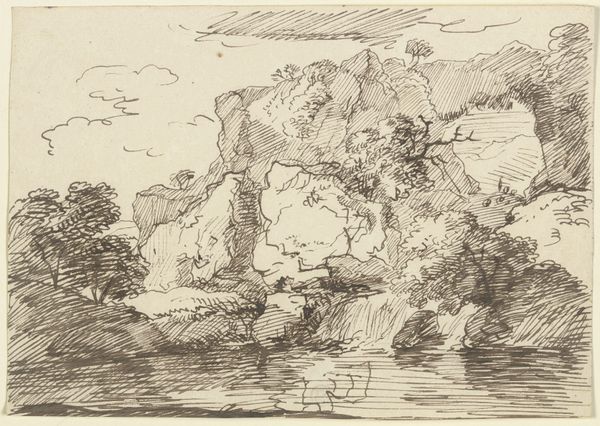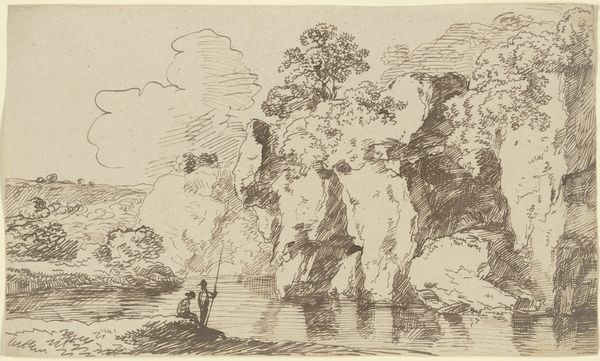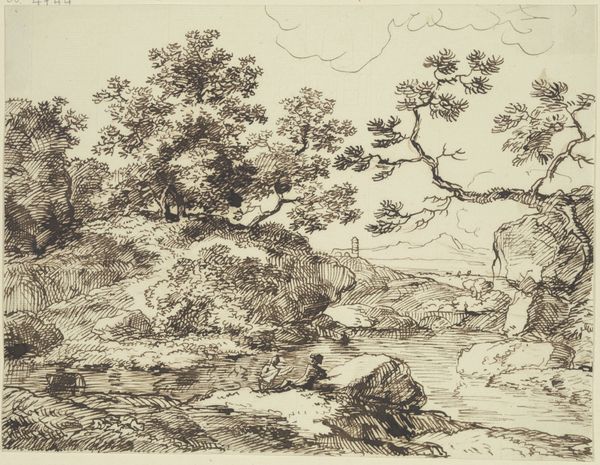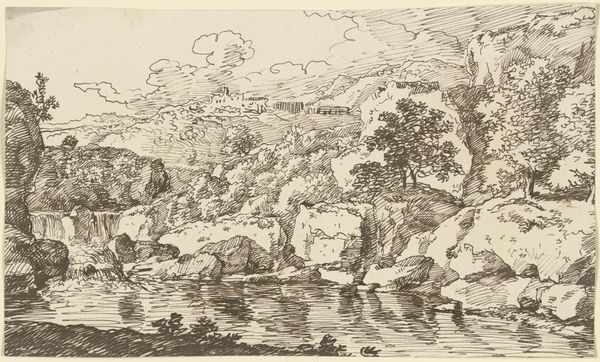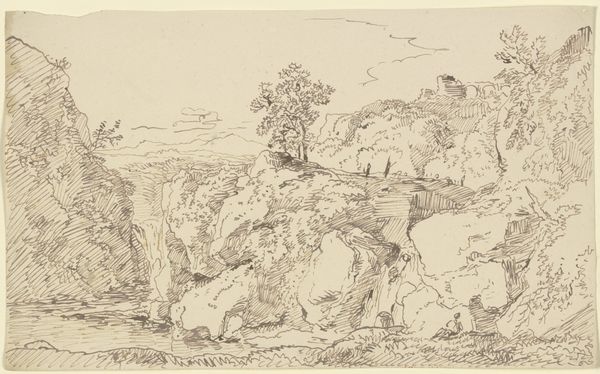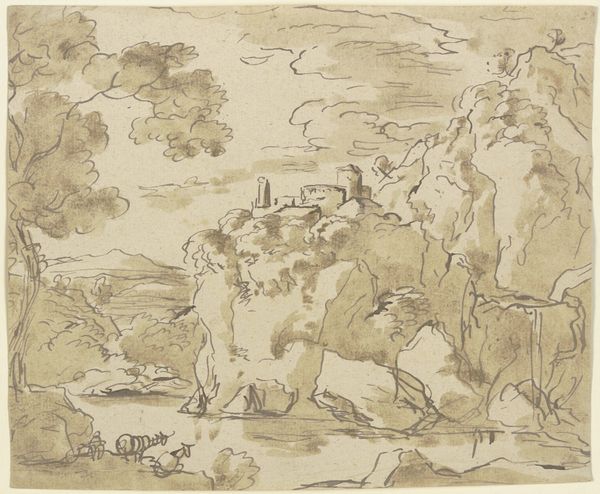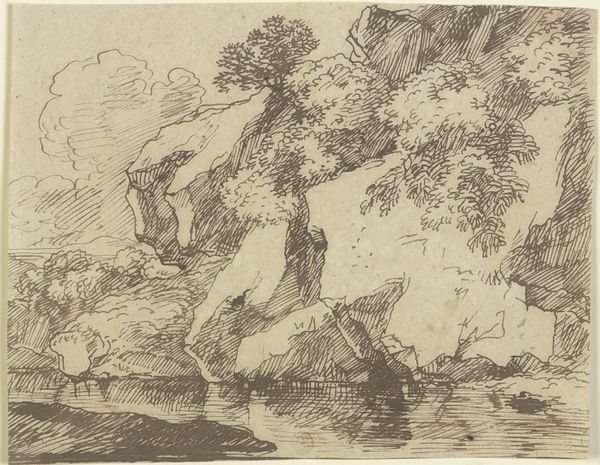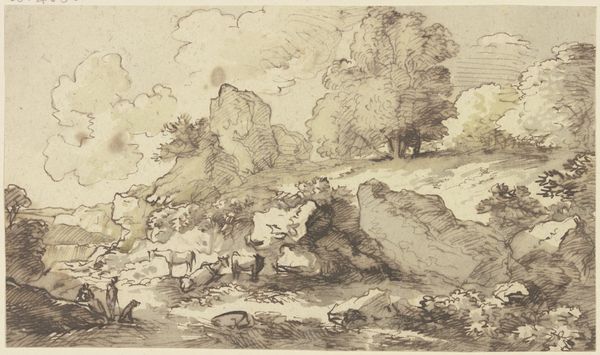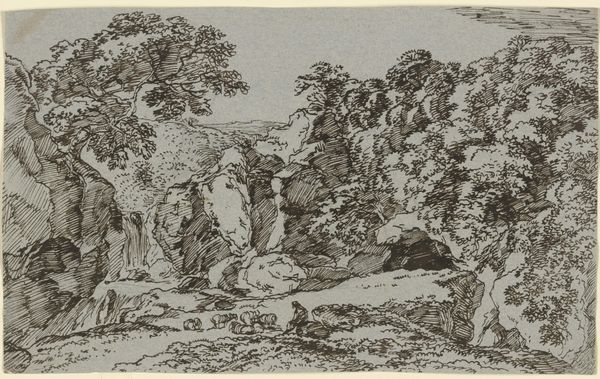
Gewässer, links auf dem Felsvorsprung zwei Wanderer, rechts auf dem Felssporn eine Burgruine
0:00
0:00
drawing, plein-air, ink, pen
#
drawing
#
pen drawing
#
pen illustration
#
pen sketch
#
plein-air
#
landscape
#
figuration
#
ink
#
romanticism
#
line
#
pen
Copyright: Public Domain
Editor: This delicate ink drawing, "Gewässer, links auf dem Felsvorsprung zwei Wanderer, rechts auf dem Felssporn eine Burgruine," is attributed to Franz Kobell. The title translates roughly to "Waters, with two hikers on the left promontory and a castle ruin on the right spur." The scene evokes a sense of romantic contemplation. What can you tell us about how this work sits within art history? Curator: What's immediately striking is how Kobell positions the viewer. We are offered a picturesque view of nature, carefully constructed. The figures are small, almost props within a landscape dominated by the suggestion of sublime power in nature with the water, rock formations, and imposing ruin. This framing serves the political project of Romanticism: nature is not just background, it becomes a source of national and personal identity. Does that read for you here? Editor: Definitely. There is an emphasis on the wildness of the scene; human presence feels temporary compared to the landscape's grandeur. Were artworks like these used to project power? Curator: Absolutely. Consider that landscapes, seemingly innocent, became potent signifiers of territory and ownership during the rise of nation-states. Think about who was commissioning and viewing these images. It was the emerging bourgeoisie, looking to establish themselves, in part, through association with such powerful landscapes. Can you imagine these scenes being reproduced in popular prints, extending their influence? Editor: That's fascinating! So the choice to portray a somewhat ruined, but enduring castle relates not only to the aesthetics of Romanticism, but also connects to a rising national consciousness? Curator: Exactly. It speaks to a mythologized past, connecting present-day viewers to an idealized and heroic national narrative. Looking at this piece now, knowing this, do you view those small figures of wanderers in the same light as before? Editor: I see them now as actively participating in claiming this national landscape through their presence, making it part of their identity, solidifying the bond between people and place. It's like witnessing the very formation of national identity in real-time!
Comments
No comments
Be the first to comment and join the conversation on the ultimate creative platform.
